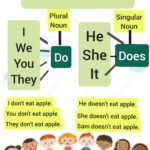Our speech is not possible without speech sounds. We learn to improve our English pronunciation but we do not pay much attention to learn about speech sounds. Let’s learn more about English speech sounds. We have 44 speech sounds in English and they have been kept in the two categories: voiced sounds and unvoiced sounds. All the vowel sounds are voiced sounds. All the cosonant sounds in English are either voiced or voiceless which are also known as unvoiced sounds.
Voiced Sounds:
Voiced sounds are produced when your vocal cords vibrate. We pronounce voiced sounds with a vibration in our vocal cords. As you pronounce a letter, feel the vibration of your vocal cords. If you feel a vibration, the sound is voiced. These are the voiced consonants: B, D, G, J, L, M, N, Ng, R, Sz, Th (as in the word “then”), V, W, Y, and Z.
Voiceless or Unvoiced Sounds:
When we pronounce voiceless sounds, our vocal cords do not vibrate. We make these sounds WITHOUT any vibrations in our throat and we make them simply by “pushing” air through the mouth. For example, /p/, /t/, /f/, /s/.
All the voiced and unvoiced consonant sounds come in a pair according to their manner of articulation. They take the same mouth position, and the same tongue position.
Voiced Sounds with Examples
/ b / bat
/ v / van
/ d / dog
/ z / zoo
/ g / go
/ ð / they
/ ʒ / vision
/ dʒ / joy
Voiceless Sounds with Examples
/ p / pin
/ f / fan
/ t / toy
/ s / son
/ k / kite
/ θ / thumb
/ ʃ / shop
/ ʈʃ / choose
To test a sound is voiced or unvoiced, put your fingers on your throat. Now, make a voiced sound such as /b/, /d/, or /z/. You will feel your throat vibrates. On the other hand when you pronounce voiceless sound, you will not feel any kind of vibration in your vocal cords.

- This vs It
- Bad in or Bad at
- Identify Nouns
- Nouns and Their Kinds
- Gerund in English Grammar

- Birds and Their Sounds
- Powerful Adverbs for Writing
- Adverbs in English Grammar
- Worksheet – Abstract Nouns
- Simple Past Tense: Rules and Examples
- Little vs A Little vs The Little
- Ones vs One’s vs Once: Understanding the Differences
- Homophones with Examples
- Idiom: Bury the Hatchet

- Parts of Speech

- Present Continuous Tense: Rules and Examples

- Using “Was” and “Were”

- The Secret for Correct English Pronunciation
- Speak English Like A Pro

- Common Words with Silent Letters
- How to Crack a Job Interview?

- Make food vs Cook Food

- Common English Mistakes: Test Your Knowledge

- Present Perfect Tense
- Idioms for Daily Conversations
- Basic vs Advanced English Vocabulary
- Simple Present Tense Rules with Examples

- 10 Useful Idioms with Meaning and Examples

- Various Ways to Make Requests

- Prepositions Test with Answers

- Collocations in English

- Whose vs Who’s

- Using Idioms and Expressions in Everyday Conversations

- Daily Use Sentences in Hindi to English

- Techniques to Improve English Vocabulary

- Its and It’s Worksheet

- Tips to Improve English Writing Skills

- Overcome Your Fear of Speaking English in Public

- How to Order Food at a Restaurant

- Lose vs Loose : Differences with Examples

- Types of Sentences in English

- Rules to Use Commas in English

- Apposition in English Grammar

- Everyday vs Every day
- Question Tags – Quiz

Very new and informative.
Wonderful work??